-
Posts
1,118 -
Joined
-
Last visited
Content Type
Profiles
Forums
Events
Gallery
Posts posted by Swashbuckler 1700
-
-
When I saw the dog in the wig in that last one, I suspected it was at least partially satirical and, sure enough, if you blow it up you'll find Hogarth's name on it. I think I'll make that one my avatar. It's been awhile since I changed it...
Jib, he is getting them from all over the place, probably doing some sort of image search. (From experience, I can tell you that it can be a right pain the arse to find period images of what you're looking for.) So it's a nice thread from that perspective.
It is Hogarts's...
-
Here is perhaps well know pic
I am going to analyse this circa 1730 painting of merchant captain and his look because it is fun.

While this pic proves that even captain would dress practical clothing there some notes that I make. When I first saw this pic I I thought that " that is a plain looking captain but that is not the case.
- note the coat it is not justakorps but it is fur edged and actully to me it seems to be bit snobby... fur is after all not very cheap
- He holds an Elton quadrant and stands against a background of rocks. The prominence given to the experimental quadrant may indicate that the sitter is Elton himself or someone closely associated with him, possibly Captain Walter Hoxton. He was captain of the ship 'Baltimore' and tested Elton's quadrant on a voyage from the Thames to Maryland and back in 1730 (note that his clothing seems to be mande for cold weather and it can get cold in north atlantic where he sailed. So slaver captain in West-Indies would use bit lighther gear)
- He is young and thus maybe his wealth is only accumulating so perhaps he looks a little plain. Compare him with that earlier pic of EIC captain
-Hat is a fur cap with odd looking peak. While it is not perhaps good looking it is not the cheapest one and it is bit bigger than the common sailors's fur caps.
- a Sahs and a sword are quite pretty looking. Some website says that that is hanger but to me it looks like small sword...
- His head is bald. I believe that reason to that is that he is not using his wig on the sea. I have seen some pics of gentleman withouth wigs from this period and the look is the same.
this other pic also gives you impression that even captain would not use wig while at sea. Note that both captains use a scarf/ turban type thing to cover his bald head.

So perhaps that first captain is not plain after all.
The latter pic is from 1740s.
-
more interesting pics here
Following pics are dutch sailor from 1695-1730 so from Gaop

Say, do you know the artist on this one? I wonder what that thing that she's holding over his head is supposed to be? A little bag of money?
Another good picture for the sailors wearing earrings thread!
Yep good sourse for earrings. they seems to be dutch style since there is 2 other pics of Dutch. one which makes pare with this (they are from 1695) and other from year 1720(so in the GAoP see this pic in this tread https://pyracy.com/index.php/topic/6921-an-earring-for-your-perusal/page__st__20 . But it is good to note that it seems to mainly Dutch style and there were only some Dutch pirates (but there were) but real popularity of earring seems to be quite small. Also this kind of earrings are different that those Hollywood's or Pyle's hoops. Still it really well plausible that some pirates had earrings and since there is these pics it is not completely myth. Two different artists have put earrings to sailor so it is certainly not artistic error and thus good evidence.
-
I don't have heard anyting about Bb's surgeon...
BTW Did blackbeard reallythreatened to burn Boston to the ground if they would (authorities in Boston) hang Bellamy's men... Like this bage says http://archive.field...ydahsloss_2.asp
-
More pics... some of these are just sligtly later time that GAoP.

Spanish captain c.1700
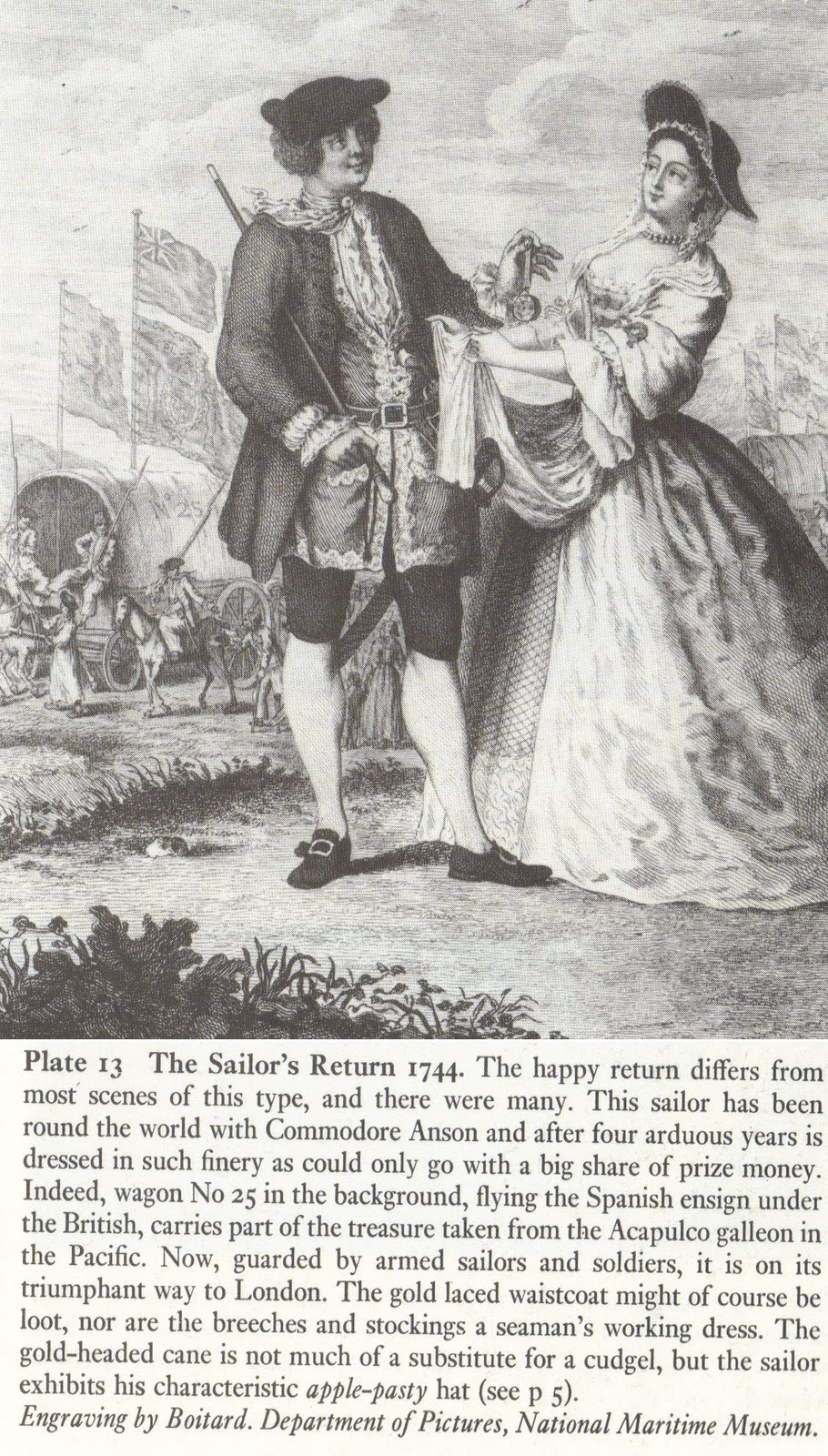
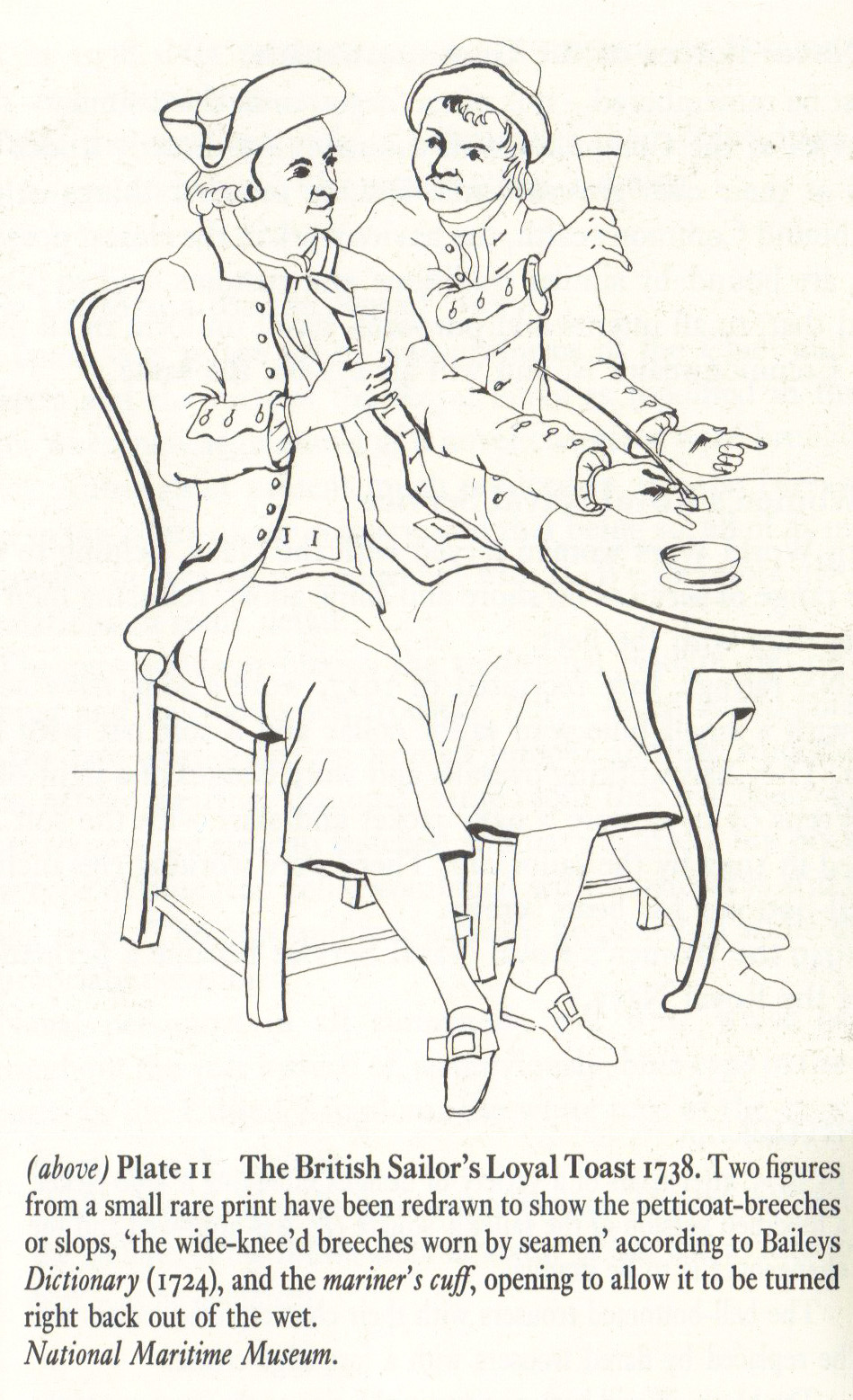

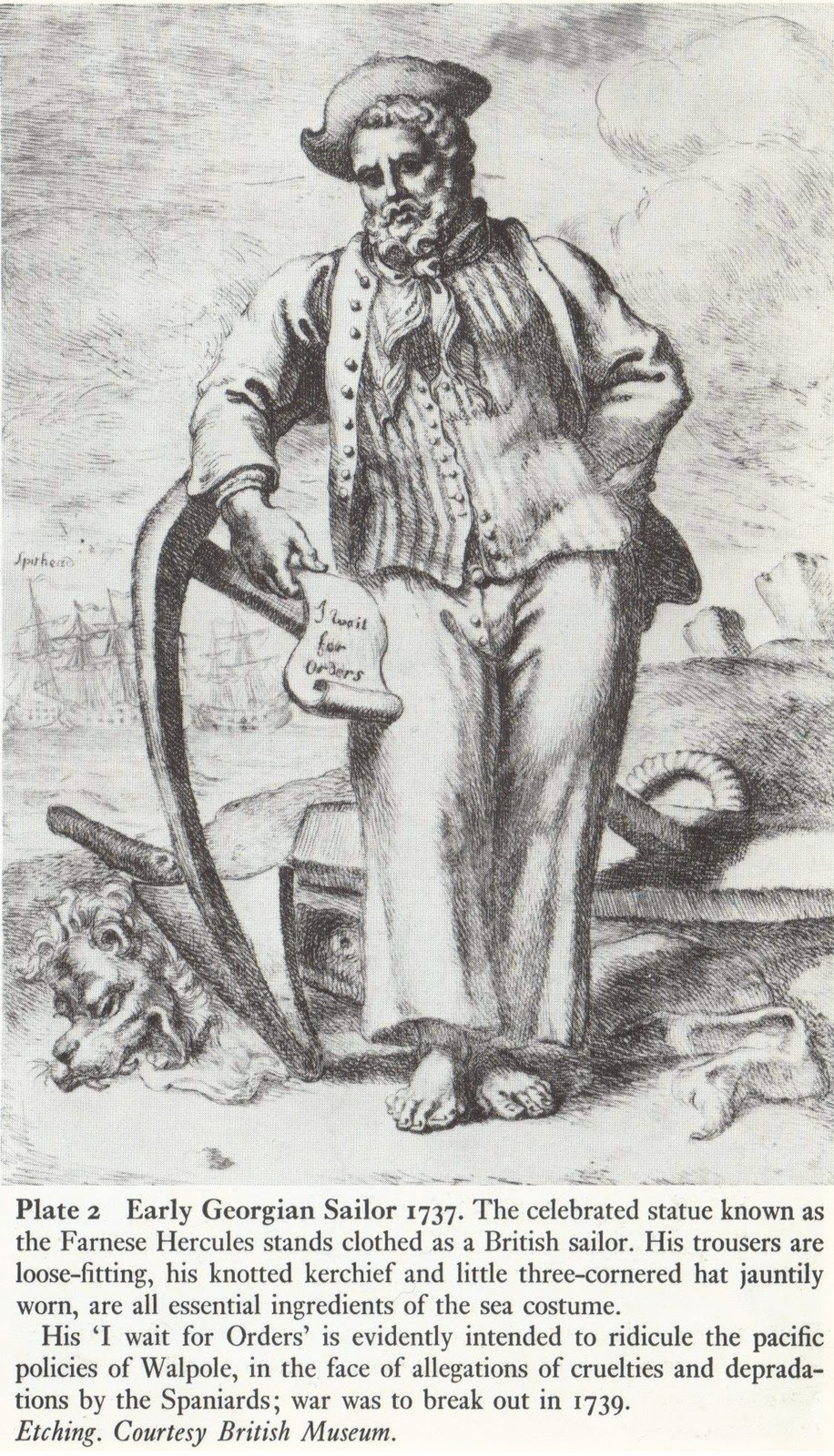
-
4. Blackbeard was not the ferocious monster he is often portrayed as, but was insecure and ill for a large part of his career
I've agreed in part with this assessment for a long time, so don't take much convincing. I suspect that the image we have today is a combination of Blackbeard's own self-promotion and the embellishments added by the popular press of the day, including Johnson, which has been greatly expanded by subsequent writers, rather than an accurate portrayal of the man.
I'm not convinced by the argument that Blackbeard was critically sick for the last few months of his life, which is based on his forcible conscription of surgeons, his demands for a medicine chest at Charleston, and the claim that he was once too ill to lead an attack. The forcing of surgeons was extremely common, and pirates had to get their medical supplies from somewhere (especially such a large number of pirates as Blackbeard then had under his command), so in the absence of a passing merchantman carrying a supply of drugs and bandages, medical supplies actually seems like a good reason for the risky gambit at Charleston. This leaves us with the fact that he was once ill - not proof that he had a debilitating illness. All that said, it's by no means impossible.
Ah, a most enjoyable critique by Foxe. I have a question about the above point, though. I've just been reading through one of the General History accounts and I didn't find anything about Blackbeard's "forcible conscription of surgeons." So where would that fact be found? I am reading (by a rather bizarre set of circumstances) a 1748 version of the book. Is it in another edition?
I am not sure did i get what here is going but. It is likely that those surgeons or medicines were for Bb's crew and the crew had syphilis (from the Bahamas or who knows were
 ) but it is just a theory...
) but it is just a theory... -
Thanks for resurrecting this thread Mission - Articles are my current favourite topic!
In answer to your question, I suspect that that article is more to do with sociabilty than fire risk. Candles are no more dangerous on a wooden ship after 8pm than before, though I suppose that a candle in the hands of a drunken man is more dangerous than in the hands of a sober man, and that men are more likely to be drunk after 8.
I'm not convinced that it was just Roberts who wanted a bit of peace and quiet below decks after eight. The idea of all-night drinking binges was not so widespread in the GAoP, and people did tend to go to bed earlier. Evidence from, I think, George Roberts' account bears out that this applied to pirates as well. Even when pirates did indulge in all night drinking, they wouldn't have wanted to do it every night, and probably not everyone would have wanted to join in.
Such forms of social control for the preservation of the community harmony were one of the most important aspects of the articles. I'm reminded of the articles employed by American PoWs in the Revolution and War of 1812, which served exactly the same purpose and contained many similar clauses to pirate articles. One set, I forget when and where except that it was on a hulk rather than a prison camp, included a rule about not smoking below decks, and the memorialist who mentions it (Benjamin Palmer?) links it specifically to the comfort of the sick, not fear of fire. The interesting thing is that, in that case at least, it was scrupulously obeyed. The author bemoaned the fact that when the prisoners were confined below decks at night he went nearly mad with craving but even though his hammock was next to an open gun-port he still wouldn't smoke, because it was against the rules.
Great help for parents who have kids who are interested in pirates (to get the kids to sleep on the rigth time) "pirates too went bed early"

Good points there. I think all those were reasons for that ligths out on 8 thing... after all in articles of a only dozen of rules there is no need room for useless rules.
-
I've never come across a period reference to the Nassau widow I'm afraid, or even any other modern reference.
Emmanuel Wynne's flag was described by a Royal Navy officer, I forget who described England's, but I think it was one of the officers of the East India Company ship Cassandra. Other pirates known to have flown the skull and cross bones or a simple variant include Blackbeard, Thomas Cocklyn and others
I find it funny that often books like many gordingly's and others say someting like "classical skull and cross bones were used only by some pirates but it was not only style in Jolly Rogers"(or at least they deemphasize the classic tsyle's popularity) and in fact it was really one of the most common desings but not only one. I have done only some study over the years and really most common flags were skull and bones, just a skull or some anatomys or skeletons...
That nassau story can be real but we will newver know...
Oh and it was Cassandra's officers who described England's J Roger.
-
The Articles of Bartholomew Roberts:
IV. The lights and candles to be put out at eight o'clock at night: if any of the crew, after that hour still remained inclined for drinking, they were to do it on the open deck; [which Roberts believed would give a check to their debauches, for he was a sober man himself, but found at length , that all his endeavours to put an end to this debauch proved ineffectual.]
When I first read this article, I wondered at its purpose. It may be as is stated, but I was thinking it may also have to do with a drunken man setting fire to the ship (as is the implied purpose of Philip's article 5 and Low's article 10.) Counter to it (in a way - a rather thin way...) is Article 1, which states that each man has "equal title to the fresh provisions, or strong liquors, at any time seized, and may use them at pleasure..."
It could also have to do with men being unfit for service in the morning which is related to the point being made in this comment to the article.
I believe that meanig of this one is one of these possibilities
1. The fire risk in wooden ships
2. he wanted to sleep without glimmer of any light

3. He wanted that in night his ship would be hard to see e.g to hunting man of wars and thus he wanted to decrease chance of surprise attack in the midle of the night.
4. He wanted to save candles

I would not say roberts to be entirely sober man. Accordingly GHoP he drank some beer.(note that aroud this time beer was not held as real boose) but he was certainly not an alcololic and did not liked that he crew caroused all the time.
-
Curiously, Blackbeard seemed almost resigned to his fate when he heard it was coming.
“The Night before he was kill’d, he sat up and drank till the Morning, with some of his own Men, and the Master of a Merchant-Man; notwithstanding his having had Intelligence of the two Sloops coming to attack him, as has been before observ’d.” (MacKlecan, p. 18)
It does not seem like the behavior of someone who cared if they found his Journal, agreeing with what Foxe said. One thought I had was that if a pirate Captain were to keep such, it may have been out of habit.
Based on the entry as it is recorded, this does not sound like the Journaling of someone who was concerned how the spoils should be divided.
In fact, it doesn't really sound like the comments that would be made by a Captain who wanted his men to read them. (He worries in print about them men plotting against him. He probably wouldn't want them to know that he knew of their designs if if he felt his fears were real.)
Well if his intelligence was good it would have told that those sloops had no cannons and BB thought perhaps that he and his crew could win with little hangover. He was almost about to won but then there came that Maynar's surprise of hidden men. BB perhaps didn't believe that he would get captured and thus didn't destroyed E.g letter from Tobias Knight. I am not very sure how many sailors could read or write but certainly only few and thus the risk that crew would read captains books was minimum. BB was apparently well educated and because of his talents he got the captains place. Maybe that entry of GHoP is real and BB was writing that stuff just because he was bored (not new on sailing ships to get bored) and got pen and paper in his hands....
-
Diaries and list's of prizes and loot would open way to check which loot come from which vessel (and when but that is no important) and then ensure that no one is cheating while dividing the spoils. So if there was't need to diary there was need for somekind of accounting that in court's hands would be good evidence against pirates (so would be pirate articles and they wrote those still). I say that that kind of logic don't always apply to pirates e.g "why use pirate flag and tell others that you are pirate". but you have good point there and I do not mock anyone.
-
This goes under this tread:
R. Platt's book "Pirate" (one of those good books and easy to read) says that there was sailmaker widow that sewed pirate flags for brandy pay. This was in nasssau. But is this just a story? If there truth in it it could explain why so many of those nassau pirates's flags were quite similar (if she sewed similar flags). At least John Taylor, Sam Bellamy, John Martel and Edward England all used classic desing with skull and bones.
I am interested also which pirate flags were described by victims. I think that Wynne's flag and england's flag were both described by victims but is there much more.
To give some comfort I post some real flag desings to to brighten up this thread's look. All of these should have somekind of period mention but that is the style 100% autentic it is unlikely.

B. Roberts'

Ed. Low's
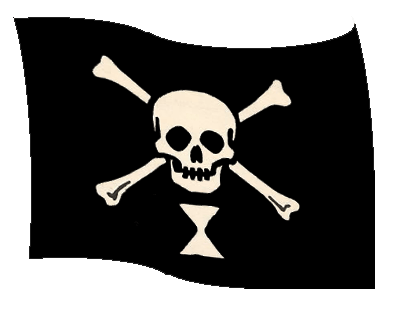
E. Wynne's
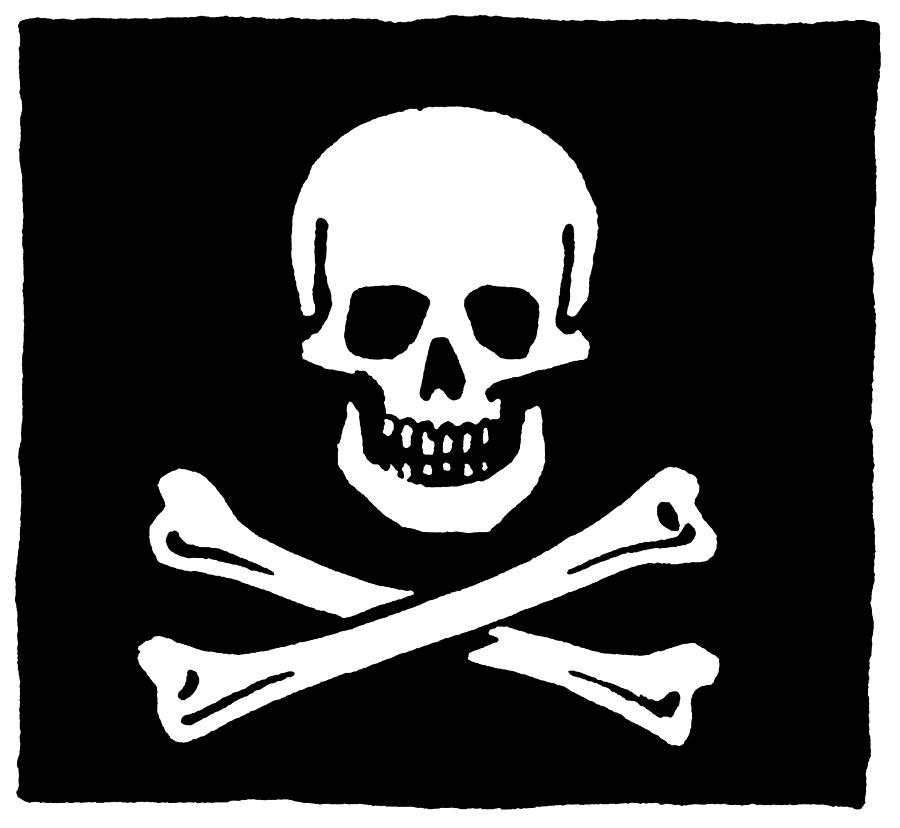
Ed. England's
-
I personally don't give too much tribute to Johnson or even these newer writers Gordingly and Constam. Still both have lots of good stuff in their books but there is never a book which people should read without some criticism. Gordingly has been tricked with pirate flags
 etc. and Constam cannot even remember dates
etc. and Constam cannot even remember dates  many of his books claims stuff like Tsede Bonnet died in 1719 or Bart Roberts in 1723.... Still like I said those writers are quite good....
many of his books claims stuff like Tsede Bonnet died in 1719 or Bart Roberts in 1723.... Still like I said those writers are quite good....Gee you've become jaded. Not everything in those books is wrong. If you don't trust the General History at all, you can't really build much of an image of what it must have been like to be a pirate, which you have stated in another post is your intention in asking all your questions. There are multiple errors in other period books and documents, as the Alexander Hamilton discussion proved. If you can't accept anything that isn't completely, provably accurate no reference is going to be good enough for you. (Even Foxe makes mistakes...)
No I don't mean that. I personally believe that there is much more true than false in general history. same with most other books like "Kordingly's. everybody makes mistakes including me, you, Foxe, Constam and Kordingly... maybe I used too extreme language because English is not my mother tongue... I trust in some point books and people but I just ment that people should not blindly believe everyting... fortunately all here are smart people...
-
One might add define "pirate".
As far as I know no authenticated pirate diary/journal from the GAoP has been published, or even exists. However, depending on what kind of information you are hoping to find you might do just as well with accounts from privateers of the period. Woodes Rogers' account of his privateering voyage into the Pacific has been published, as has George Shelvocke's of his voyage, and William Betagh's account of the Shelvocke voyage also.
Not diaries per se, but several depositions by pirates have been published in various different works - for a good rundown of depositions from Avery's, Kidd's, Quelch's and Bellamy's careers check "Privateering and Piracy in the Colonial Period" by J Franklin Jameson (ed.)
I think pirate diaries would be burned by pirates if they got captured... Image in court there is dang good evidence agains you if your diary has fallen to court's hads and in the diary there reads someting like "and in 7.11 we captured this vessel" etc...
-
I agree with Foxe and Capn Enigma with one small addition.
There is an excerpt from Blackbeard's "journal" in Charles Johnson's General History of the Pyrates. If it is real and not a fancy of Johnson's, then it runs as so:
Such a Day, Rum all out: — Our Company somewhat sober: — A damn'd Confusion amongst us! — Rogues a plotting; — great Talk of Separation. — So I look'd sharp for a Prize; — such a Day took one, with a great deal of Liquor on Board, so kept the Company hot, damned hot, then all Things went well again.Since Blackbeard's sloop Adventure was taken largely intact, with even his letter from the deputy governor of North Carolina recovered, Johnson's statement that Blackbeard's journal was captured is plausible. But except for that one excerpt, the journal is apparently lost to history. Nowhere have I seen any portion of it reproduced except the one Johnson reports.
According to an article on About.com, the Journal never existed and Johnson made that up. Where does that come from? The author lists Cordingly's Under the Black Flag and Konstam's The World Atlas of Pirates as references. Is it in one of those? (I don't own Komstam's book. I'll try to remember to check Cordingly if I can find it.)
It does sort of make sense, though. I can't believe if Blackbeard left a journal with such interesting comments in it that more of it wouldn't be published somewhere. Unless it's in a private collection or something. (That would make a helluva McGuffin for a crime novel, you know...or a book about treasure hunting. The movie could star Nicholas Cage.)
I personally don't give too much tribute to Johnson or even these newer writers Gordingly and Constam. Still both have lots of good stuff in their books but there is never a book which people should read without some criticism. Gordingly has been tricked with pirate flags
 etc. and Constam cannot even remember dates
etc. and Constam cannot even remember dates  many of his books claims stuff like Tsede Bonnet died in 1719 or Bart Roberts in 1723.... Still like I said those writers are quite good....
many of his books claims stuff like Tsede Bonnet died in 1719 or Bart Roberts in 1723.... Still like I said those writers are quite good.... -
more interesting pics here
Following pics are dutch sailors from 1695-1730 so from Gaop

Say, do you know the artist on this one? I wonder what that thing that she's holding over his head is supposed to be? A little bag of money?
It is autentic but artist is unknown to me...
That bag seems to money bag... payment for her services

-
more interesting pics here
Following pics are dutch sailor from 1695-1730 so from Gaop




-
Note the simiralities of the admiral and other oficer's dress... admiral english and it is by dutch artists and other from the french one...
-
I think it is bit propaganda stuff. How our (french picture) brave officers defy death to serve our king....

-
Hi I would to share some pictures about GAoP period... you may know these but some perhaps don't

Captain Robert Knox of the East India Company
French naval officer circa 1700

English admiral circa 1700

-
During my historical pirate surgeon presentation, I spend the first few minutes explaining the GAoP and the differences between the buccaneers and the pirates of the Caribbean. I even use photos to distinguish between the two.
Yeah that is what others should do whyyy they don't do that in books... there is plenty of differnce between buccaneers and GAoP pirates.
-
I mean that often buccaneers and pirates are put together in books etc. then they just say what pirates did and you cannot be sure did they mean buccaneers or pirates...
-
I've had a quick scan through that book. It doesn't look bad, but I picked up a few debateable points in the few pages I really read properly. My biggest concern with it is that, like so many books of its kind, it uses the pirate label to cover research which is predominantly about buccaneers. Looking through the primary sources in the bibliography, I see Atkins, Ashton, and Johnson, and a mass of stuff about buccaneers. He didn't even, apparently, use Snelgrave's book, which is filled with juicy details of daily life and is readily available, let alone take the time to find and translate du Buquoy's account, which is hard to locate and in French, but contains as many good details as Snelgrave. Lesser known pirate-captive accounts are also ignored. There is no sign of any archival research, which means a massive body of evidence that would have provided some really interesting material has been overlooked.
And I don't like his definition of "Jolly Roger" in the glossary. I can forgive him connecting it with "jolie rouge", but he says it's a Victorian term when it appears in numerous sources from 1719 onwards.
(sorry bit offtopic)This brings me mind that problem that really often book makers e.g puts buccaneers and pirates together and then says what pirates were like... often Gaop is said to period 1650-1730 and books say like that the pirates in mid 17th century were same group whith pirates of 1700s.. and it is not true since there is many differences between buccaneers and pirates...
-
In google search I found this forum http://www.forums.py....php?f=19&t=209


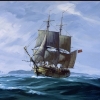
Some interesting pictures.
in Captain Twill
Posted
BTW is that (latter pic) red fur edged sting a coat too ( Captn is just not put it on yet ). see there is buttons there and that on captains hand seems to be sleeve... interesting I have always thought it as red fur cloak but it seem sto be in fact a coat...